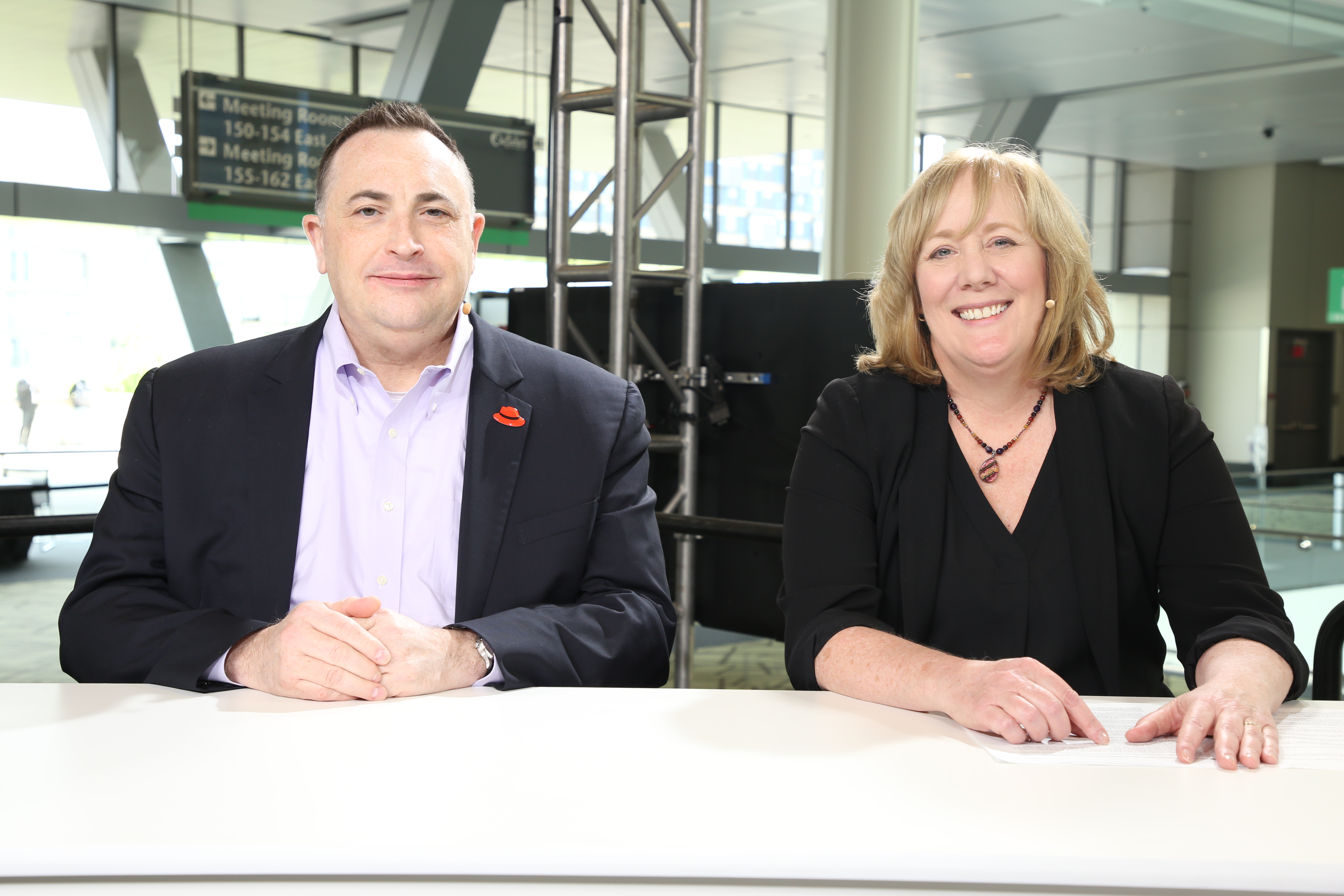 AI
AI
 AI
AI
 AI
AI
While edge computing has always presented its set of challenges and security concerns, its ability to create new business profitability avenues is evident.
Features such as artificial intelligence are becoming more capable as IT infrastructures meld with operational technology for edge-driven transformation at scale, according to Christine Boles (pictured, right), vice president of the Network and Edge Group and general manager of federal and industrial solutions at Intel Corp.
“It is happening and it has to continue; the real need comes from current infrastructure being limited in what it can service,” she said. “It needs to be more agile and more flexible. If you bring the IT infrastructure into the OT world, it allows for that flexibility to happen and that transformation to happen. And then it allows for new functions like AI and that intelligence at the edge to happen.”
Boles and Darrell Jordan-Smith (left), senior vice president of industries and edge at Red Hat Inc., spoke with theCUBE industry analysts John Furrier and Paul Gillin at Red Hat Summit, during an exclusive broadcast on theCUBE, SiliconANGLE Media’s livestreaming studio. They discussed practical scenarios of edge-enabled capabilities through AI. (* Disclosure below.)
Exciting new technologies are only as impactful as the real-life impact they provide. One of those examples is how train companies in the U.K. are relying on computer vision to track train departures, monitor track conditions and ensure citizen safety within and outside the train, according to Jordan-Smith.
“One notable thing I’ve seen more recently is in the United Kingdom where British rail is using computer vision to not just safely monitor what’s happening over a platform at the edge (if someone falls down) through to just tracking trains leaving and arriving on time,” he said. “There’s a lot of economic benefits from them doing that, ensuring the train station is safe and flowing properly.”
Every workload doesn’t have to be transported and processed locally, thus doing so immediately at the edge affords the kind of expediency ideal for workloads such as AI, Boles added. Intel and Red Hat demoed these ideas at this week’s event.
“What we’re demonstrating here in the Red Hat booth is an edge instantiation for process automation and overall workflow management, all sitting on Red Hat,” she said. “From where we have been with more closed systems to more open systems utilizing the assets we have from the IT and telco industries, this is a game changer.”
Here’s the complete video interview, part of SiliconANGLE’s and theCUBE’s coverage of Red Hat Summit:
(* Disclosure: Intel Corp. sponsored this segment of theCUBE. Neither Intel nor other sponsors have editorial control over content on theCUBE or SiliconANGLE.)
Support our mission to keep content open and free by engaging with theCUBE community. Join theCUBE’s Alumni Trust Network, where technology leaders connect, share intelligence and create opportunities.
Founded by tech visionaries John Furrier and Dave Vellante, SiliconANGLE Media has built a dynamic ecosystem of industry-leading digital media brands that reach 15+ million elite tech professionals. Our new proprietary theCUBE AI Video Cloud is breaking ground in audience interaction, leveraging theCUBEai.com neural network to help technology companies make data-driven decisions and stay at the forefront of industry conversations.